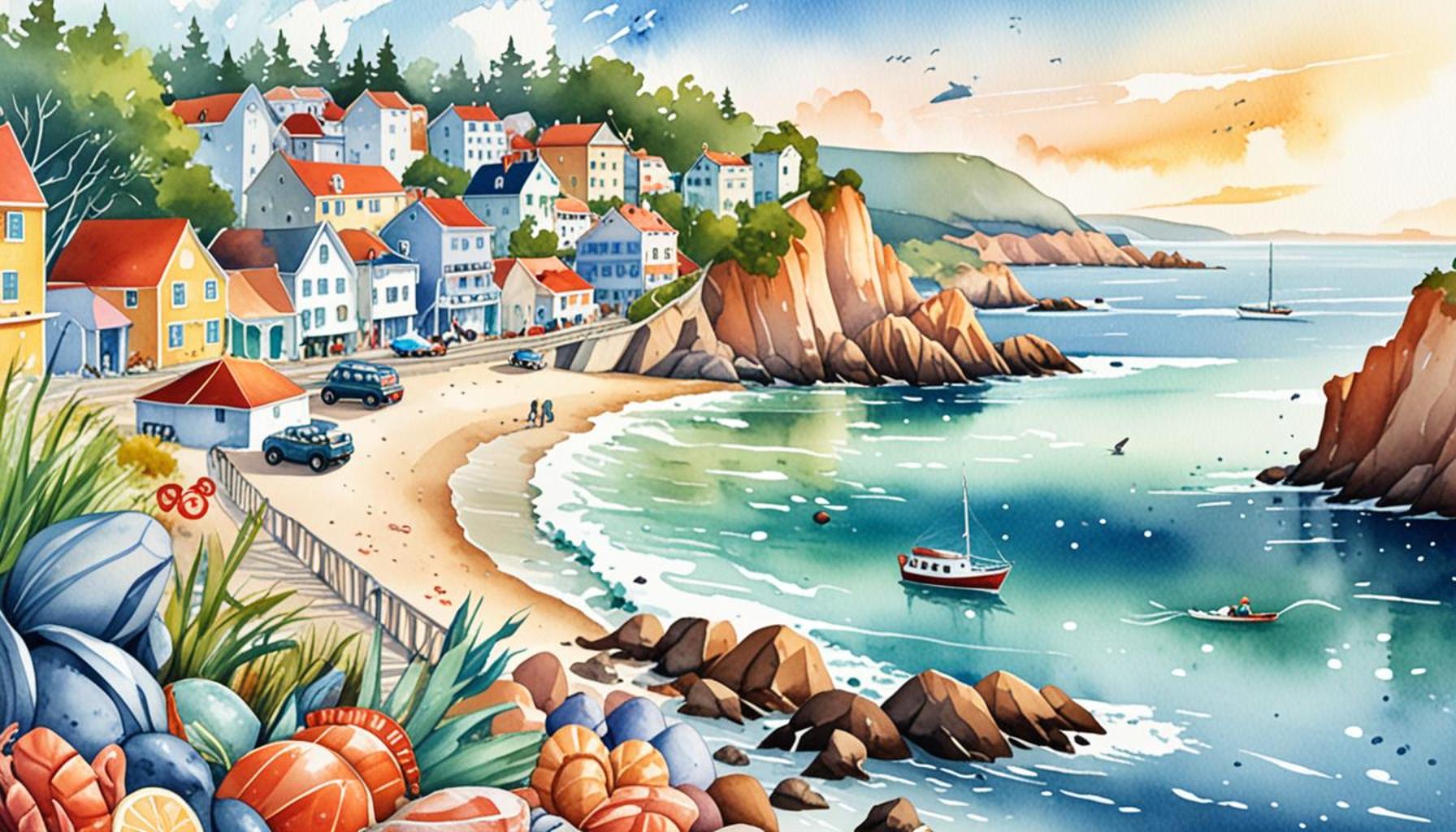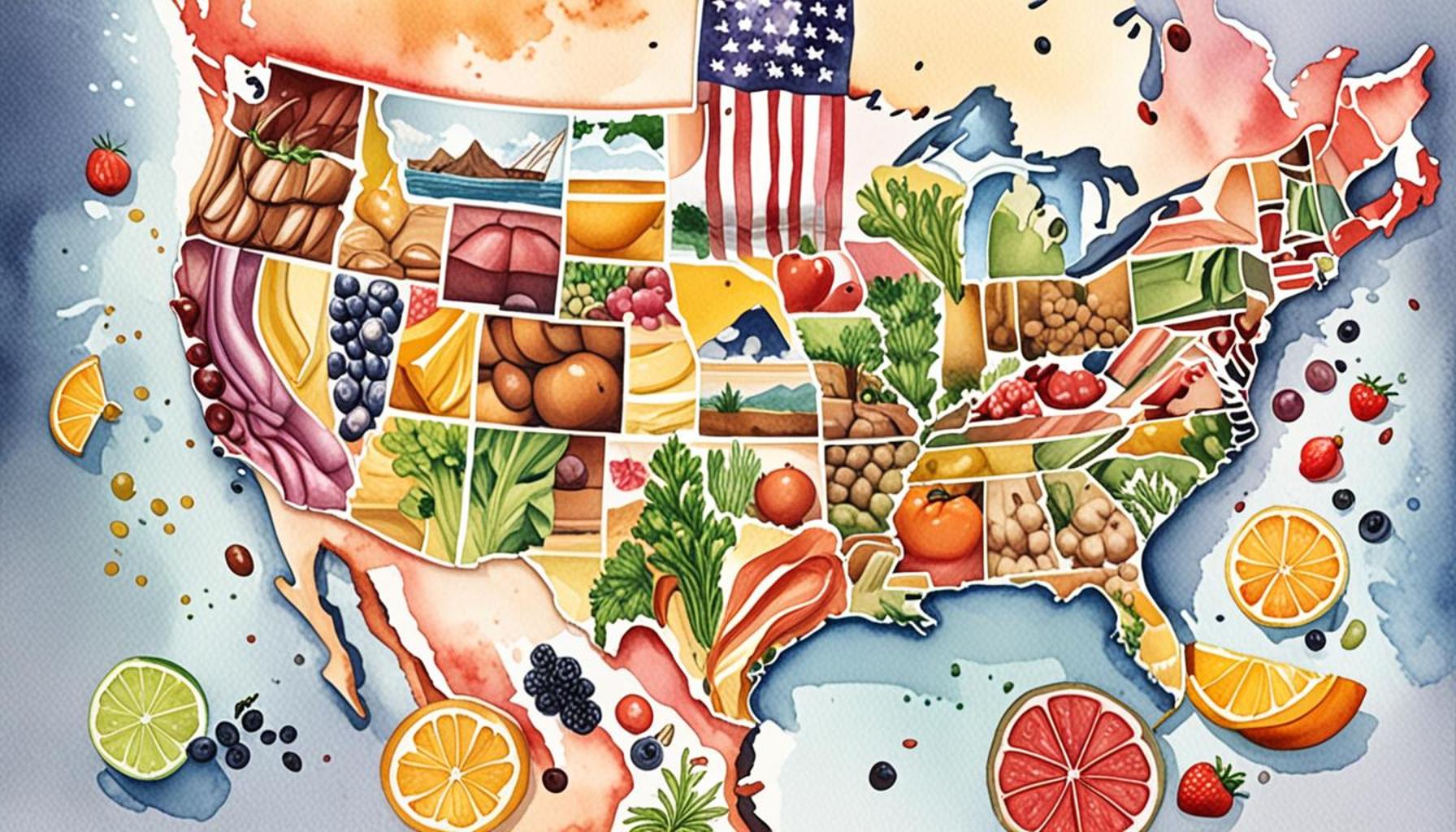Coastal Route: Discovering Seafood in Coastal Regions

Embark on a Culinary Journey
Traveling along the mesmerizing coastal routes of the United States unveils a spectacular world of seafood. Known for its fresh catches, coastal regions provide mouthwatering experiences that delight the senses. From quaint seaside shacks to upscale dining establishments, seafood aficionados will find endless delights waiting to be discovered. Each region presents a unique culinary story influenced by local culture, history, and the ocean’s bounty.
Highlights of Coastal Seafood Cuisine
- Variety of Flavors: Coastal seafood cuisine is rich in diversity, showcasing an array of catches like succulent shrimp, sweet blue crabs, tender scallops, and flaky fish such as cod and halibut. For example, the Gulf of Mexico is renowned for its spicy Cajun-style shrimp dishes, while the Pacific Northwest is celebrated for its rich salmon and tender Dungeness crab. Each seafood item carries its own flavor profile enhanced by regional ingredients and traditional cooking techniques.
- Freshness Guaranteed: One of the greatest joys of coastal dining is the promise of freshness. Local fishermen often bring the catch of the day straight to nearby markets and restaurants. In towns like Cape May, New Jersey, diners can indulge in freshly caught flounder or clams harvested just hours before reaching the kitchen. This farm-to-table experience is a hallmark of coastal dining that elevates every meal.
- Unique Preparations: Every region has its culinary highlight that exemplifies local flavors. For instance, in New England, the iconic clam chowder is a must-try, rich and creamy with fresh clams and potatoes, often complemented by freshly baked bread. Meanwhile, the Mexican-influenced coastal regions like Southern California entice seafood lovers with vibrant fish tacos, featuring grilled or battered fish topped with cabbage and zesty sauces, perfect for enjoying alongside ocean breezes.
Accompanying this culinary journey are charming coastal towns, with their stunning vistas and the rich tapestry of history woven through generations of fishing communities. Each visit to a coastal eatery offers not just a meal, but a narrative about the local culture, fishing practices, and even the environmental challenges faced by these communities today. Exploring the culinary landscape along the coast not only fills your stomach but also your heart with stories and traditions that are distinctly American.
Join the Adventure
This coastal gastronomic expedition invites you to indulge in the vibrant flavors of the sea while taking in breathtaking ocean views. Whether you’re a local or a visitor, there are always new ingredients, dishes, and stories waiting to be discovered. Picture yourself feasting on a lobster roll in a rustic Maine shack or enjoying fresh oysters at a vibrant seafood festival in New Orleans. Let your taste buds guide you to the culinary treasures that lie just beyond the shoreline, and immerse yourself in our nation’s rich seafood heritage.
DISCOVER MORE: Click here to dive into the adventure
Unearthing Local Seafood Specialties
As one embarks on a culinary adventure along the coastal routes, each stop reveals an intriguing tapestry of local seafood specialties that define the character of their respective regions. From the bustling docks of New England to the sun-soaked shores of Southern California, seafood lovers can indulge in the vibrant tastes that tell a story of tradition, sustainability, and regional pride.

Savoring Sustainable Catches
In recent years, sustainability has become a crucial aspect of coastal seafood, with chefs and fishermen alike embracing methods that respect marine ecosystems. Many coastal communities now prioritize responsible fishing practices that ensure fish populations thrive for future generations. For instance, the Pacific Coast is leading the charge with its sustainable salmon fisheries, utilizing practices that not only protect the fish but also support local economies.
Visitors can explore local markets, where fishermen sell their daily catch directly to consumers. The experience of purchasing locally sourced seafood not only connects diners to the ocean but also to the hard work of the fishermen. In places like Charleston, South Carolina, the seafood market is a treasure trove where fresh shrimp, oysters, and fish are just waiting to be transformed into mouthwatering dishes by local chefs.
Regional Influences on Seafood Dishes
Coastal regions in the United States possess distinct culinary identities, shaped by factors ranging from geography to immigration. These influences manifest in traditional seafood preparations that speak to the heart of each community:
- New England: The rich flavors of clam chowder serve as a hallmark of this area’s cuisine, often enjoyed with saltines and lobster rolls that pay homage to the region’s thriving lobster industry.
- Gulf Coast: Cajun and Creole influences shine through dishes such as étouffée or shrimp jambalaya, where spicy seasonings enhance the natural sweetness of fresh seafood.
- Pacific Northwest: Renowned for its salmon, this area boasts a focus on grilling and smoking techniques, creating dishes that elevate the freshness of the fish while intertwining regional herbs and spices.
- California: Known for its inventive seafood offerings, the state presents flavors inspired by fusion cuisine, with dishes such as fish tacos incorporating a lively medley of salsas and toppings.
The beauty of coastal dining lies in the stories behind each dish. Diners are not merely enjoying a meal but are engaging with the traditions and cultural heritage that define the region. This journey encourages culinary exploration and fosters appreciation for the delicacies prepared by skilled hands.
As you traverse coastal routes, each plate of seafood becomes a window into the lives and stories of those who have made their livings from the ocean. It beckons travelers to dive deeper, explore untenured eateries, and relish the unique flavors deeply rooted in local culture.
| Advantage | Details |
|---|---|
| Freshness of Seafood | Traveling the Coastal Route ensures direct access to locally sourced seafood, providing superior freshness and flavor. |
| Variety of Culinary Experiences | Each coastal region boasts unique dishes, allowing visitors to indulge in a diverse range of seafood cuisines, from classic clam chowder to exotic delicacies. |
| Support Local Economies | Choosing local seafood vendors empowers Coastal communities, helping to enhance sustainable fishing practices and promote local businesses. |
| Unique Learning Opportunities | Education on seafood sustainability and fisheries management creates a rich educational experience for travelers interested in marine ecosystems. |
Exploring the “Coastal Route” not only tantalizes your taste buds with fresh seafood but also opens doors to a world of unique culinary adventures. From bustling fish markets to charming seaside shacks, each stop along the way adds a layer of culture and history, inviting you to savor every moment. By supporting local vendors, you contribute to the heartbeat of coastal communities, ensuring these flavors endure for generations to come. Additionally, the educational insights gained during this journey enrich your understanding of the vital relationship between coastal ecosystems and sustainable seafood practices. Delve into this flavorful journey and discover just how diverse and delectable the world of coastal seafood can be!
DISCOVER MORE: Click here to uncover breathtaking trails and scenery</
Experiencing Culinary Traditions and Festivals
As seafood lovers journey along coastal routes, they are often greeted by vibrant culinary traditions and festivals that celebrate the rich bounty of the sea. Each region boasts unique events that not only highlight local seafood but also foster community spirit and pride. These festivals create an immersive experience where visitors can enjoy fresh catches while engaging with the local culture.
Seafood Festivals Across Coastal Regions
Coastal seafood festivals serve as a hallmark of community connection and culinary exploration. Events such as the Gumbo Festival in Louisiana and the Newport Seafood and Wine Festival in Rhode Island bring together local chefs, fishermen, and enthusiasts, creating a lively atmosphere filled with delicious aromas and tantalizing flavors. These festivals often feature cook-offs, tasting competitions, and workshops, allowing guests to learn cooking techniques and gain insight into the fishing industry.
- Oyster Festivals: These popular gatherings occur in various coastal towns, including Apalachicola, Florida, where the famed Apalachicola oysters are celebrated. Visitors can taste various preparations—from raw to smoked—and partake in shucking contests, fostering a deep appreciation for this delicacy.
- Lobster Festivals: In Maine, the annual Yarmouth Clam Festival features not only clams but also celebrates the mighty lobster with contests, live music, and culinary demonstrations that teach about sustainable harvesting practices.
- Shrimp Festivals: The Pensacola Seafood Festival showcases shrimp as the star attraction, offering dozens of vendors that whip up everything from shrimp po’boys to shrimp gumbo, each reflecting local flavor and creativity.
These festivals not only unite communities with a shared passion for marine cuisine but also spotlight the importance of sustainable practices and fresh, locally sourced ingredients.
The Role of Culinary Education and Innovation
In addition to celebrating seafood through festivals, many coastal regions are taking a progressive approach by integrating culinary education with a focus on sustainability. Culinary schools and programs dedicated to marine cuisine are flourishing in cities like San Francisco and Seattle, where chefs are trained not only in traditional seafood preparation but also in sourcing the freshest ingredients responsibly.
Many restaurants along the coastal routes utilize this education to push the boundaries of seafood cuisine. Innovative dishes emerge, such as sea urchin spaghetti in food-forward Los Angeles or tempura-fried soft-shell crabs in Washington, D.C., exemplifying the intersection of local flavors and culinary creativity.
Moreover, the integration of technology in tracking fish populations and the rise of direct-to-consumer seafood subscription services showcases how the seafood industry is adapting to consumer demands for transparency and sustainability. These innovations not only provide fresh seafood to homes across the country but also educate consumers on the importance of supporting local fisheries and sustainable practices.
As travelers venture down coastal routes, they not only embark on a gastronomic journey but also an exploration of community ties, innovative culinary practices, and a deep-seated respect for the maritime heritage that each dish represents. This blend of tradition and modernity invites adventurous souls to participate in the vibrant seafood culture that flourishes along America’s coastlines. By engaging in these culinary activities, tourists are afforded a taste of authentic coastal life and the stories that each delicacy tells.
DIVE DEEPER: Click here to uncover the beauty of cultural heritage routes</p
Conclusion: Embracing the Richness of Coastal Seafood
Exploring the coastal routes across the United States offers a unique opportunity to not only indulge in delicious seafood but also to immerse oneself in the vibrant cultures and traditions that define these regions. The sights and sounds of local seafood festivals bring communities together, showcasing diverse culinary skills while emphasizing the importance of sustainable practices. Transformative events such as the Gumbo Festival or Pensacola Seafood Festival not only celebrate beloved dishes but inspire a renewed appreciation for the sea’s resources.
Moreover, the growing integration of culinary education and innovation signifies a forward-thinking approach to seafood cuisine, bridging the gap between tradition and modern sensibilities. As new culinary techniques emerge and sustainability becomes a priority, chefs are redefining seafood dishes in imaginative ways, proving that the ocean’s offerings are as limitless as the creativity of those who prepare them.
Whether sampling fresh oysters in Apalachicola or enjoying lively lobster boils in Maine, every stop along the coastal routes encapsulates stories of heritage, community, and environmental consciousness. As you traverse these picturesque paths, you are not merely indulging your taste buds; you are participating in a larger narrative that highlights the interconnectedness of nature, culture, and cuisine. The journey along America’s coastlines is an invitation to discover, experience, and celebrate the remarkable world of seafood that awaits at every turn.


